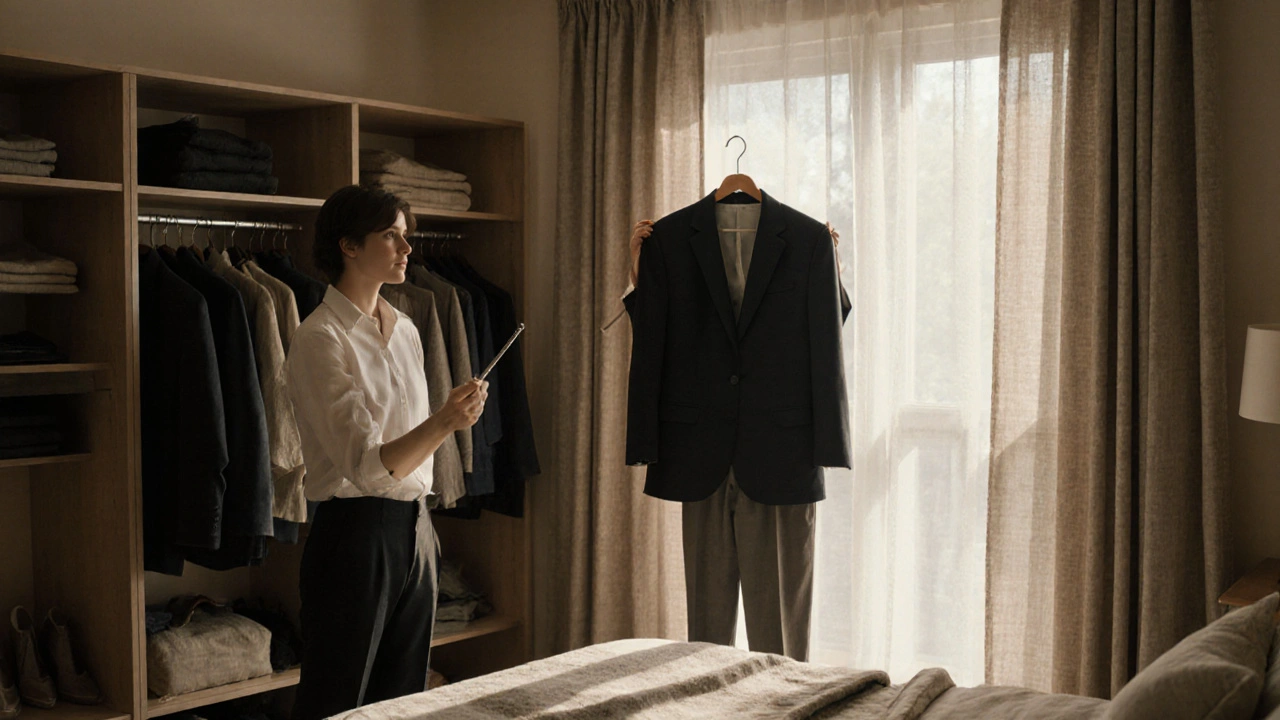Wardrobe Design: Build a Smart, Sustainable Closet That Works for You
When we talk about wardrobe design, the intentional planning and organization of clothing to match daily life, not just trends. Also known as closet system, it’s not about having more clothes—it’s about having the right ones, in the right place, for the right reasons. Most people treat their closet like a storage unit. But real wardrobe design treats it like a tool—one that should make your mornings easier, your choices clearer, and your impact smaller.
Good wardrobe design, the intentional planning and organization of clothing to match daily life, not just trends. Also known as closet system, it’s not about having more clothes—it’s about having the right ones, in the right place, for the right reasons. doesn’t start with buying more. It starts with asking: What do I actually wear? How many pairs of jeans do I need in a city with four seasons? What fits my body, my schedule, and my values? That’s where capsule wardrobe, a small, curated collection of versatile clothing pieces that mix and match for daily use. Also known as minimalist closet, it’s a practical approach to reducing decision fatigue and clothing waste. comes in. It’s not a trend. It’s a response to clutter, fast fashion, and the exhaustion of having too much and still feeling like you have nothing to wear. People who build a capsule wardrobe, a small, curated collection of versatile clothing pieces that mix and match for daily use. Also known as minimalist closet, it’s a practical approach to reducing decision fatigue and clothing waste. don’t just save space—they save money, time, and energy. And they do it without sacrificing style.
And it’s not just about the number of items. wardrobe design, the intentional planning and organization of clothing to match daily life, not just trends. Also known as closet system, it’s not about having more clothes—it’s about having the right ones, in the right place, for the right reasons. includes how you store them, how you rotate them, and how you decide what stays and what goes. The 12-12-12 rule, a decluttering method where you pick 12 items to donate, 12 to repair, and 12 to keep. Also known as wardrobe audit, it’s a no-nonsense way to reset your closet without overwhelm. isn’t magic—it’s a checklist. The 33 piece wardrobe, a precise system of 33 clothing items meant to last 3 months with full outfit variety. Also known as minimalist capsule, it’s a test of intentionality. isn’t about restriction—it’s about freedom from choice paralysis. And the 1 bag rule, packing everything you need for weeks into a single carry-on to force simplicity. Also known as travel wardrobe, it’s a life hack that reveals what you really need.? That’s not just for travelers. It’s a mirror for your everyday habits.
Real wardrobe design doesn’t care about Instagram aesthetics. It cares about what works on a Tuesday morning when it’s raining, you’re late, and your coffee spilled. It’s about knowing exactly where your favorite sweater is, how many pairs of shoes you actually need, and why you keep holding onto that one dress you never wear. This collection pulls together real stories, real numbers, and real systems—from Chicago winters to city commutes—that show you how to build a closet that doesn’t just look good, but actually works.
What Personal Stylists Do: The Scope of Professional Fashion Consultation and Wardrobe Design
Posted by Michael Griffin on Nov, 5 2025

Personal stylists help you build a wardrobe that works for your life-not just your look. They analyze your body, habits, and goals to create a system that saves time, money, and stress. Learn what they actually do and who benefits most.
